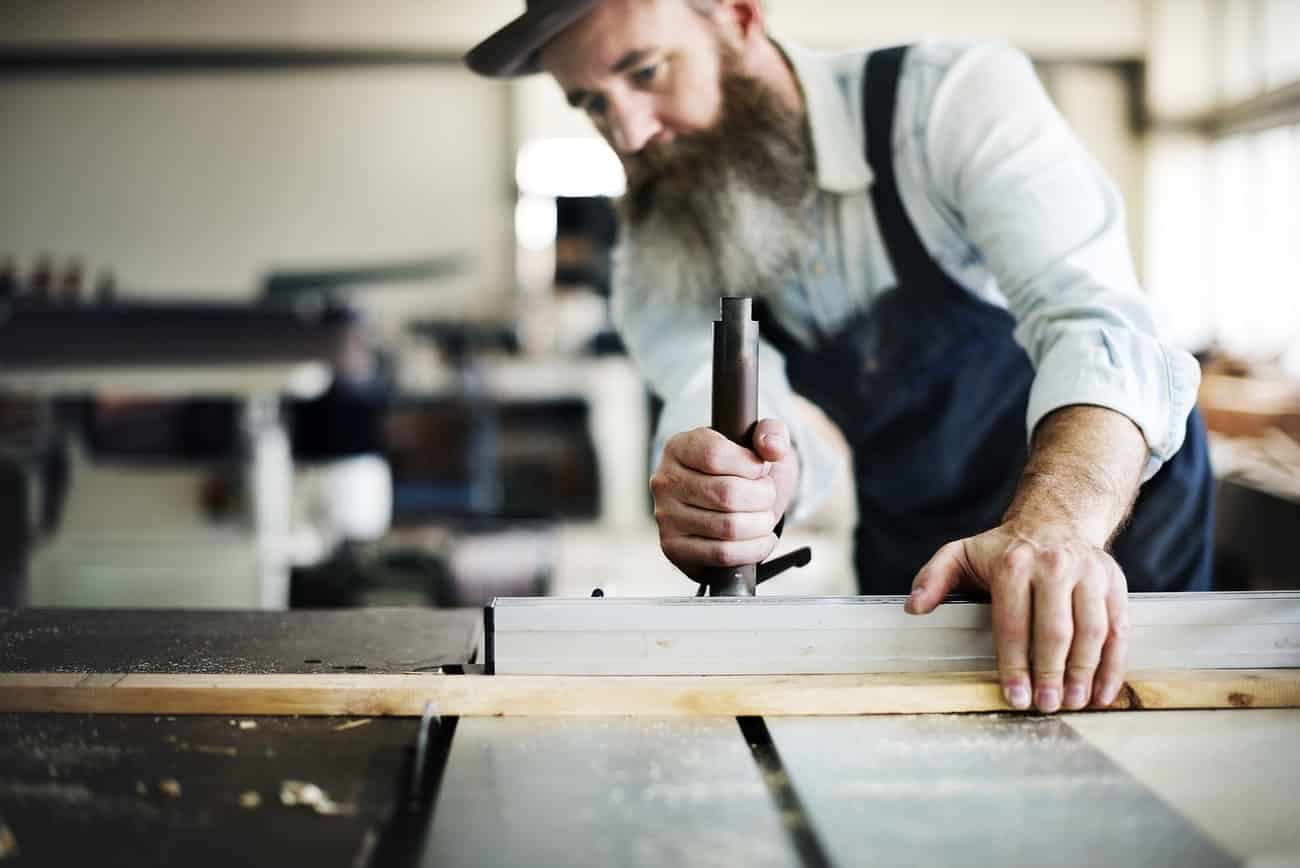How Does a Planer Work? Your Ultimate Handbook

Professional carpenters and DIY woodworkers alike agree that there is some woodworking equipment that you simply must-have in your workshop if your projects are to run smoothly. A wood planer is one such piece of equipment.
There are manual options which require you to use manual pressure to get them to work, and then there are mechanical ones that come with a plethora of settings and remove more wood with every motion.
If you are new to this, you might be wondering how does a planer work or if you are really new, you might be wondering what a planer is and what you can use it for? Let’s cover a bit about planers to get you acquainted to this wonderfully efficient woodworking machine.
What Is a Planer?
A wood planer is essentially a type of woodworking equipment that features one or several sharp blades and is used in removing small amounts of wood from the surface of a plank, a board, or any wood-based material you are working on. The amount of wood removed from this surface depends on the depth setting you choose on the planer.
There are very many variations of wood planers, but the two main models you need to know are the handheld electric planer and benchtop planer. As the name would suggest, a benchtop planer is designed to be used on a table or cabinet while a handheld model is just that – handheld.
The handheld models have a power cord that will need to be plugged in before use, and they run on a universal motor. You can find some handheld planers that come with batteries from the manufacturer. Some of these batteries are rechargeable, but a corded, handheld electric planer is often more reliable.
While handheld models are conveniently easier to use and much cheaper, if you are planning to go pro or are a real woodworking enthusiast, you might want to consider going for the more expensive yet better benchtop planers.
The best manufacturers sell these planers with their corresponding tables. These tables are specifically designed to make using that planer more efficient and allow you to process bigger planks or boards at a time.
How Does a Planer Work?
To understand how a planer works, you first need to fully understand what a planer does. Every time you want to remove a very thin layer of wood from the top of a board, plank or sheet, the machine you are going to need is a planer.
Planers work well with all types of wood including plywood, hardwood and MDF. Some planers are designed to work on composite boards and even laminate.
The main reasons why planers are the best machines to remove that thin layer is because they have a depth adjustment knob on the sides of the machine. The depth setting you choose will determine how deeply the knives on the bottom of the machine will cut into the wood.
By simply ensuring that the wood is on a flat surface, a planer will give you a smooth, even finish to a fraction of an inch.
Now that you know exactly what a planer does, let’s take a quick look at the different parts of a planer to shade more light on how it works:
- Tables and beds: The base of a benchtop planer is called it’s “Bed”. This bed houses the important mechanisms and components that the machine needs to work. The table goes right over the bed and is where you will place your piece of wood and clamp it down.
- Housings: These are the columns found on the bed of the planer. These provide some protection for the inner workings of the machine.
- Cross rails: These are held up by the housings and have groves that allow for vertical movement. Cross rails are designed to help you fit wood of different sizes and varying heights into the planer.
- Tool heads: Tools heads are found on both the horizontal and vertical cross rails. These are what hold the element of the planer that actually chips away at the surface of the wood to give you that uniform thickness.
- Driving portion: Located under the table, it’s the part that moves the table.
- Feed mechanism: This is the part that carries the wood into the planer where it will get worked on and carries it out as a finished product.
These are all the parts that make the planer what it is and helps you achieve the desired result. That being said, here is a small description of how a planer works:
- If you are using a benchtop planer, you need to know that it has knives and a cutting surface that is at the base.
- You can adjust the cutting depth using the knobs on the top or the side of the machine depending on your model. There will be markers indicating the different depths.
- The board should be flat on the table before using the tool on it.
- Once you turn the tool on, all you have to do is apply some pressure to push the plank or board you are working on through the machine.
- If, however, you are using a handheld planer, you will be doing the opposite of the above. Instead of pushing the wood through the machine, you will be pushing the machine over the wood. These models have an ergonomic handle that allows you to safely apply pressure as you push it over the wood.
Here’s a video giving you a quick tutorial on how to use an electric planer:
Here’s one showing you how to use a benchtop planer:
While it might seem like a benchtop planer would be the easier and more efficient option, some carpenters prefer a hand planer because it gives them more control throughout the entire process. It also helps that a hand planer is significantly cheaper than benchtop options.
As is standard when using electric tools, or tools of any kind really, you need to wear protective gear to keep yourself safe. This includes protective goggles, gloves and even a work apron.
